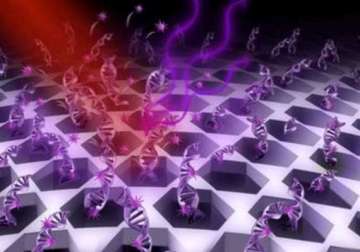New York: Researchers have developed a new technology that could bring photodynamic therapy (PDT), which uses lasers to activate special drugs to treat easily accessible tumours such as oral and skin cancer, into areas of the body which were previously inaccessible.
The procedure, till now, has not been adept at fighting cancer deep inside the body.
The approach involves using near-infrared beams of light that, upon penetrating deep into the body, are converted into visible light that activates the drug and destroys the tumour.
“We expect this will vastly expand the application for an effective cancer phototherapy that is already in use,” said Tymish Ohulchanskyy, associate professor at the State University of New York at Buffalo.
The researchers used the tumour's natural environment to tune the light into necessary wavelengths.
For example, the near-infrared laser beam can interact with the natural protein collagen, which is found in connective tissues. The interaction changes the near-infrared light to visible light, a process known as second harmonic generation.
Likewise, natural proteins and lipids within the cells can interact with near-infrared laser light and change it to visible light through another process called four-wave mixing.
Thus, visible light can be generated in tumours deep inside the body, and it can be absorbed by the drug. This activates the drug, which then destroys the tumour, researchers said.
The study appeared in the journal Nature Photonics.
Latest Business News
